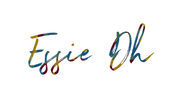Indigo - Tie Dye - Ouidah, BENIN
Exploring the Magic of Indigo in Ouidah, Benin
Recently, I had an incredible adventure in Ouidah, Benin (West Africa), where I discovered a true gem for fabric enthusiasts: a store specializing in creating beautiful fabrics using an exceptional dye called indigo. Let me share with you this immersion into a world of colors and millennia-old traditions.
Indigo is much more than just a dye; it's a cultural heritage, a fascinating story woven through the ages. Used for centuries in various cultures around the world, indigo is extracted from special plants and has gained a reputation for its rich and deep color, symbolizing both simplicity and sophistication.

Indigo: A World Heritage
Ancient History: The earliest traces of indigo use date back to ancient civilizations in Egypt, India, and Greece. This dye traveled along trade routes, becoming a symbol of prestige and commerce.
Cultural Impact: Indigo is more than just a pigment; it's a pillar of cultural identity. Patterns and dyeing techniques are passed down through generations, creating a deep connection between artisans and their heritage.



Craftsmanship and Sustainability
Dyeing Techniques: The process of indigo dyeing is a blend of art and science. Techniques like shibori*, where fabrics are folded, knotted, and compressed before being immersed in an indigo bath, create unique and unreproducible patterns.
Here are the typical steps:
- Fabric Preparation: Firstly, a white fabric is prepared for dyeing. This usually involves natural fabrics such as cotton, silk, or linen.
- Design Creation: Patterns are drawn, traced, or marked on the fabric using various techniques such as folding, knotting, clamping, stitching, or using resists.
- Resistance Application: Areas of the fabric that should not be dyed are tightly bound with ties or stitched with threads to create resist areas.
- Dyeing: The fabric is then immersed in an indigo bath or chosen dye. The non-resist areas will absorb the color while the resist areas remain white or take on a different color.
- Resistance Removal: Once the fabric has been dyed and the dye has been set, the resist areas are removed by undoing ties or cutting threads. This reveals the design pattern created by the resist areas.
Sustainability and Fair Trade: With the rise of environmental awareness, many artisans are turning to natural and sustainable dyeing practices. Fair trade initiatives also ensure that artisans are fairly rewarded for their work.
My Adventure in Ouidah
Stepping into the Couleur Indigo store, I was greeted by a world of colors and textures. Artisans worked with passion, using ancestral techniques to create unique pieces. I learned how meticulous fabric preparation and resistance application give rise to astonishing patterns, each piece telling a story. Through this article, I wanted to share my experience with you.
Indigo is not just a dye; it's a sensory and emotional experience, a link between the past and present, between cultures and individuals. It's a reminder of the richness of our artisanal heritage and the importance of preserving these traditions while moving towards a more sustainable future.
In conclusion, my journey to Ouidah not only allowed me to discover the beauty of indigo but also immerse myself in a rich and vibrant culture where art and history converge to create something truly magical.
By preserving ancient craftsmanship techniques and adopting sustainable practices, we are not only preserving a precious heritage, but also building a future where art, culture, and sustainability converge to shape a more harmonious world
Step into the fascinating world of craftsmanship with our latest video showcasing the intricate manufacturing process! >>> CLICK HERE (vlog) <<<
*Shibori is a Japanese dye-resist technique done on fabric through binding. It's also known as "tie and dye"



